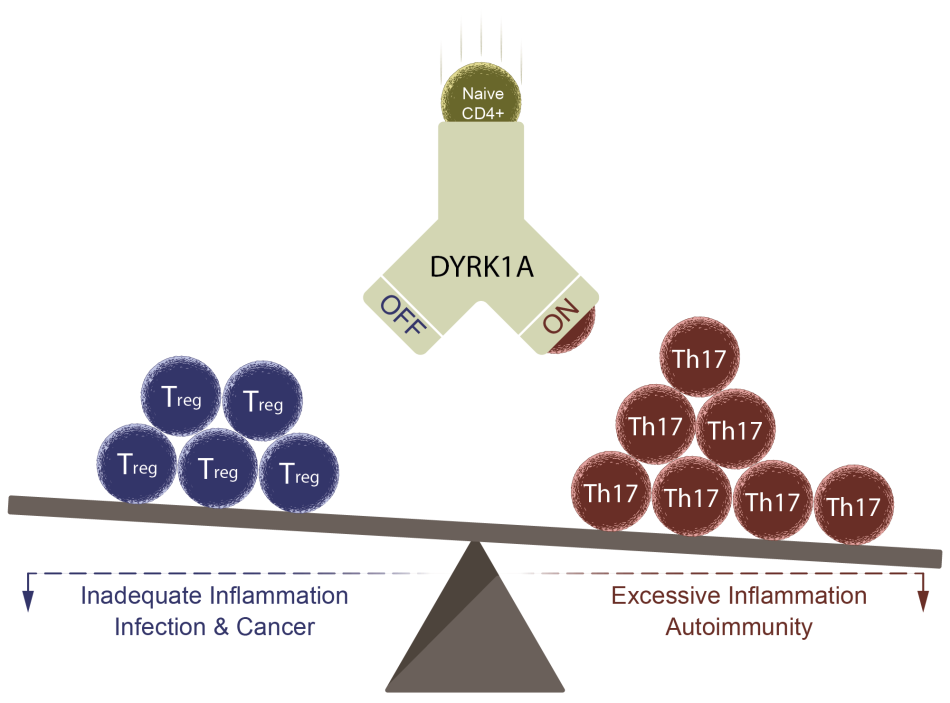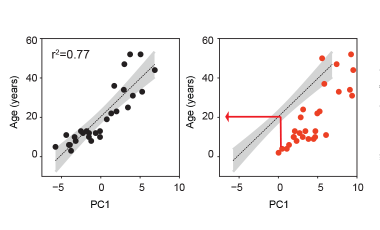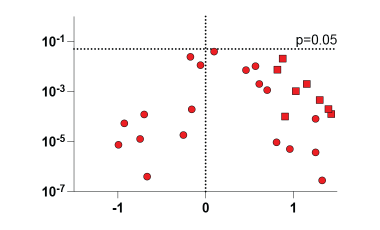Immune homeostasis requires a tightly regulated balance between pro-inflammatory T cell subsets (e.g., Th17, Th1) and anti-inflammatory T cell subsets (e.g., Tregs).

We pioneered a high-throughput unbiased discovery effort in primary T cells to discover novel small molecules that enhance Treg differentiation. This approach is a powerful complement to standard genetic techniques for at least two reasons:
- Naïve T cells are relatively difficult to manipulate using standard genetic methods.
- Small molecules of interest may immediately represent target leads for therapeutic efforts.
Mechanistic studies of our small molecule enhancers can identify novel biology. In particular, we identified the kinases DYRK1A and CDK8 as a novel druggable regulator of Treg differentiation. Inhibition of DYRK1A or CDK8 shows great promise in reducing inflammation in model systems. In particular, deletion of Dyrk1a in murine T cells also inhibits Th17 differentiation.
Ongoing studies in the lab are designed to uncover the underlying pathways and better understand the key relevant physiological settings. Of note, DYRK1A is on chromosome 21, overexpressed in people with Down syndrome and associated with increased Th17 cells in people with Down syndrome. Thus, we are exploring if DYRK1A inhibitors can represent a precision immunomodulatory approach, particularly in people with Down syndrome.
Additional Research Projects

Aging and Down syndrome: The immune system and beyond



